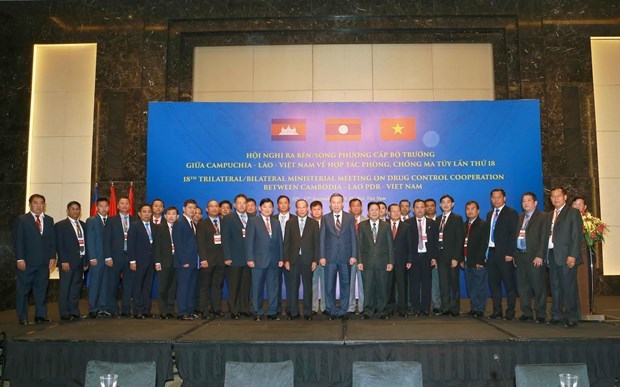 |
|
Participants at the meeting
|
The 18th trilateral/bilateral ministerial meeting on drug prevention and control between Cambodia, Laos and Vietnam (CLV) took place in Hanoi on September 11.
The trilateral and bilateral cooperation mechanisms between the three countries have been proving effective since its establishment in 1998, said Vietnamese Minister of Public Security Gen. To Lam, who is also Vice Chairman of the National Committee on AIDS, Drugs and Prostitution Prevention and Control.
He called on the three countries to strengthen coordination and promote internal resources while optimising external support to prevent drugs, especially cross-border drug trafficking.
The minister suggested improving public awareness raising campaigns and strengthening capacity of anti-drug forces, stressing that the trilateral coordination will be an important factor to ensure successful prevention and control of drugs in each country.
The three countries agreed to focus all efforts on realising the goal of protecting the ASEAN Community against illicit drugs in 2016-2025 without tolerating drugs and accepting the legalisation of drug use.
They vowed to persistently pursue the post-2015 drug-free ASEAN vision and consider this as a common goal of the three nations.
The three countries agreed to implement effective measures to prevent cross-border drug crime and improve the efficiency of periodic meetings between shared border localities according to the spirit of the signed agreement and action coordination plan.
They concurred to improve the operation of cross-border liaison offices (BLO) and open more BLO in hotspot areas, as well as facilitate the coordination between functional agencies to crack down on drug-related crimes.
An Giang, Cambodia’s Kandal province foster comprehensive partnership
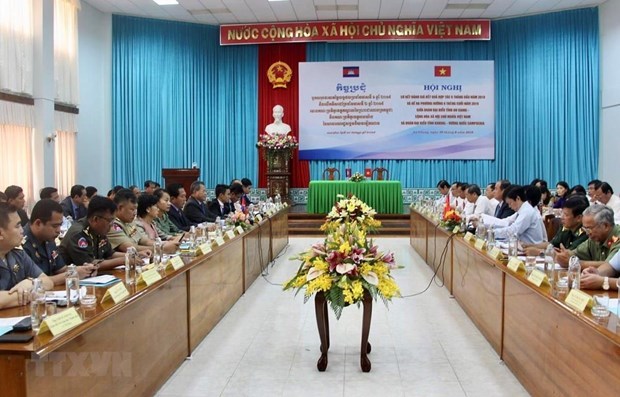 |
|
An overview of the conference
|
The Mekong Delta province of An Giang and Cambodia’s Kandal province held a conference in Long Xuyen city on September 10 to review their cooperation since the beginning of the year and sketch out plans for the rest of 2019.
Addressing the event, Chairman of the People’s Committee of An Giang Nguyen Thanh Binh said that over the years, hospitals in the border area of An Giang have treated more than 2,000 Cambodian patients.
The two localities have shared information and helped each other enhance capacity in supervising and preventing communicable diseases.
On the occasion, Binh thanked Kandal Governor Mao Phirun and Kandal authorities for supporting Team K90 of Vietnam in searching for and repatriating remains of Vietnamese soldiers who died in Cambodia. Since 2018, the team has collected and repatriated 24 sets of remains, he noted.
For his part, Kandal Governor Mao Phirun said the partnership between the two localities has expanded to cover many areas such as economy, culture and society.
He proposed An Giang invest in building a new bridge to connect Nhon Hoi commune of An Phu district with Kandal province across Binh Di canal, making it easier for locals of both sides to travel.
Authorities of the two sides should work closely in preventing illegal sand exploitation in border rivers as well as combating criminals along the border.
For the rest of the year, the two sides will continue coordinating to ensure security and order along the border, while authorities of both sides will strengthen communications on laws among border communities, they agreed.
An Giang and Kandal will also coordinate in managing entry and exit activities in auxiliary border gates, while creating favourable conditions for road and waterway travel, and closely controlling vehicle and goods transport through the border.
Alongside, the two sides will continue affiliating with the joint committee on land demarcation and marker planting of Vietnam and Cambodia to speed up the planting of border markers along the border.
The two localities will cooperate in preventing river bank erosion to protect border markers, while supporting each other in trade promotion and forming banks in border areas to facilitate border trade.
They will allow locals to use water in rivers and canals along the border for farming, share information on the environment and water levels in rivers and canal, and provide optimal conditions for trade exchange.
Kandal will continue building a good transshipment centre in Chrey Thom international border gate and other border gates, while An Giang will finalise procedures for the upgrade of Vinh Xuong-Kaomsomnor and Khanh Binh border gates to international ones, as well as the opening of two auxiliary border gates of Khanh An-Prek Chrey Prek Tonle and Vat Lai-Prek Sbov.
Vietnam looks to strengthen ICT cooperation with Hungary
 |
|
At the working session between Minister of Information and Communications Nguyen Manh Hung and Hungarian Minister of Foreign Affairs and Trade Peter Szijjártó
|
Minister of Information and Communications Nguyen Manh Hung has met with Hungarian officials and Secretary-General of the International Telecommunication Union (ITU) Houlin Zhao to boost cooperation and learn experience in information and communication technology (ICT).
Hung, who is in Hungary to attend the ITU Telecom World 2019 from September 9-12, had working sessions with Hungarian Minister of Foreign Affairs and Trade Peter Szijjártó and Minister of Innovation and Technology László Palkovics.
During the sessions, the two sides agreed to increase activities to mark the 70th founding anniversary of Vietnam-Hungary diplomatic relations in 2020, while increasing the sharing of information and films to promote the images of the nation and people of each country.
Both sides will support the connection of e-commerce businesses and logistics firms of the two countries, while speeding up the implementation of cooperation agreements.
Szijjártó pledged to strengthen collaboration programmes with Vietnam and share experience in hosting the ITU Telecom World with Vietnam as the country will organise the event in 2020.
Meeting with ITU Secretary General Houlin Zhao, the two sides discussed the plan of coordination to prepare for the ITU Telecom World 2020.
The ITU leader lauded the role of Vietnam in developing the global telecommunication sector, showing his belief that Vietnam will successfully host the event.
Czech diplomat hails Vietnam’s role in global arena
 |
|
Vietnamese Ambassador Ho Minh Tuan (L) speaks at the grand ceremony to mark 74th anniversary of Vietnam’s National Day.
|
Czech Deputy Foreign Minister Martin Tlapa spoke highly of Vietnam’s increasing role in the international arena while attending a grand ceremony held by the Vietnamese Embassy in the Czech Republic to mark 74th anniversary of Vietnam’s National Day on September 10.
He expressed his impression on the dynamic economic development of the Southeast Asian country, and rejoiced at the increasing bilateral economic and trade cooperation in the past time.
Last year, two-way trade reached over 1.17 billion USD, with Czech exports worth 140 million USD. Thus, the Czech Republic wants to seek cooperation opportunities to improve trade balance with Vietnam, he added.
He spoke highly of the contributions by the Vietnamese community and the Vietnamese-Czech to the host nation, adding they serve as a bridge to boost the fruitful relations between the two countries.
Based on similarities and mutual understanding, the Czech Republic wishes to promote win-win collaboration with Vietnam across the fields of transport, digital market, finance, tourism and people-to-people exchange. Particularly, the Czech Republic wants to coordinate with Vietnam to effectively carry out their cooperation contents reached during Prime Minister Nguyen Xuan Phuc’s official visit to the former in April, he added.
Vietnamese Ambassador Ho Minh Tuan took the occasion to highlight Vietnam’s achievements in the national construction and development in the past time, and thank international friends and community, including the Czech Republic, for supporting Vietnam, especially when the country undertakes the role as a non-permanent member of the United Nations Security for the 2020-2021 tenure.
Ambassador Tuan stressed the Vietnam-Czech relations have been elevated to a new high after PM Nguyen Xuan Phuc’s visit to the central European country.
Currently, both nations are preparing for the celebration to mark the 70th anniversary of their bilateral diplomatic ties in 2020, with focus on enhancing high-level visits so as to develop the cooperative relations into a more practical and effective manner.
He particularly underlined that the EU-Vietnam Free Trade Agreement (EVFTA) and the EU-Vietnam Investment Protection Agreement (EVIPA) signed earlier this year will open more opportunities to enhance collaboration in trade and economy.
Regarding the community of 80,000 Vietnamese people in the Czech Republic, Ambassador Tuan affirmed they are playing an important role in promoting the traditional friendship between the two nations, hoping that the Czech Government and people will create favourable conditions for them so that they can better integrate in the host country.
Australian university helps Vietnam digitise information on fallen soldiers
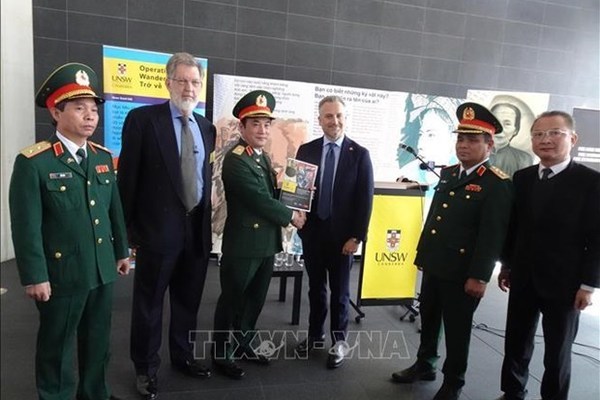 |
|
UNSW Canberra representatives hand over the project to the Vietnamese delegation
|
A visiting Vietnamese delegation, led by Deputy Minister of National Defence Sen. Lieut. Gen. Le Chiem, had a working session with Australia’s University of New South Wales (UNSW) Canberra on September 10 to receive a digitalised project on battlefields and burial sites of fallen Vietnamese soldiers during the war in Vietnam.
The project, entitled “Operation Wandering Souls – Bring Them Home”, is an extensive investigation carried out by experts, researchers and veterans on the war at the UNSW Canberra’s Australian Centre for the Study of Armed Conflict and Society (ACSACS).
At the meeting, Chiem, who is also deputy head of the National Steering Committee for Search and Repatriation of Remains of Fallen Soldiers, spoke about war consequences in Vietnam like the issues of unexploded ordnance, Agent Orange/dioxin and missing bodies of soldiers.
According to the officer, the bodies of nearly 200,000 Vietnamese soldiers need to be verified and located.
He said the Vietnamese Government has deployed several measures to find martyrs’ remains, including cooperating with other countries, organisations and individuals.
Chiem said the ACSACS’s project shows the goodwill of the Australian government.
Welcoming the delegation, Harvinder Sidhu, Associate Dean at the UNSW Canberra, said the project has been carried out for years with voluntary efforts from many experts, researchers and Australian army personnel.
He said the ACSACS built the database with records and information from the Australian War Memorial, Australian army units, American army, and armies of other nations involved in the American War in Vietnam.
Sidhu told his guests the database currently offers the location of about 6,500 battlefields and the specific identities and burial sites of some 460 Vietnamese soldiers.
The same day, the delegation had another meeting with Elizabeth Cosson, Secretary of the Department of Veterans' Affairs (DVA) of Australia.
Chiem took the occasion to ask the DVA to inform all Australian veterans on the Vietnamese Government and people’s desire to locate and repatriate soldiers’ remains. Vietnam is willing to host any organisations and individuals that come to provide such information, he added.
Cosson pledged to try her best to work with Vietnam to alleviate the war pain in the country.
She thanked the Vietnamese authorities for facilitating Australian veterans to come back to their former battlefields.
Vinh Phuc takes measures to build e-government
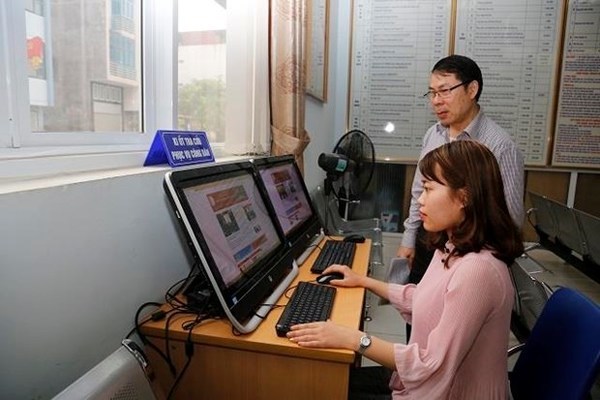 |
The northern province of Vinh Phuc has showed active performance in applying information and communication technology in building e-government with fruitful results.
Nguyen Kien Trung, head of the IT Office under the provincial Department of Information and Communications, said that the province has now completed the installation of the Local Government Service Platform (LGSP) at the IT infrastructure centre.
According to Trung, in order to synchronise the applications and database serving the provincial e-government, over the years, Vinh Phuc has focused on investing in building ICT infrastructure system.
Currently, 100 percent of State agencies and the People’s Committees of districts andVinh Yen city across the province have been connected with specialized data network and accessed to the Internet.
E-Cabinet applications have been expanded comprehensively in the provincial IT infrastructure centre. Training has been given to 40 departments, agencies, sectors and People’s Committees at district level and 137 communes, wards and towns. The software has been officially launched from early this month.
With the speeding up of administrative reform, over the years, the provincial Administrative Centre has promoted its efficiency, contributing to enhancing the transparency in its operation, creating favourable conditions for people and enterprises in processing administrative procedure.
Despite initial positive outcomes, the implementation of e-government has exposed shortcomings, while many IT applications have been small in scale and incomprehensive.
To complete the construction of the e-government as scheduled, Chairman of the provincial People’s Committee Nguyen Van Tri has asked leaders of departments, sectors and localities to enhance their responsibility in e-government building, effectively exploiting IT applications, while ensuring the connection among agencies in line with the set progress speed of each ministry, sectors and agencies.
Vinh Phuc has proposed the Government, ministries and sectors to soon complete mechanisms and create legal foundation for the launching of e-government, ensuring the efficiency of e-government applications, and focusing more on launching public services at Levels 3 and 4, he said.
Balanced care for ethnic minority people urged
 |
|
Minister of Labour, Invalids and Social Affairs Đào Ngọc Dung speaks before the National Assembly Standing Committee in Hà Nội yesterday.
|
National Assembly Chairwoman Nguyễn Thị Kim Ngân has emphasised the necessity to improve, facilitate and preserve cultural and spiritual life of ethnic minority people alongside attention to social and economic development.
She made the request while speaking at the ongoing 37th session of the National Assembly (NA) Standing Committee in Hà Nội yesterday, where the deputies listened to the brief report and discussed the implementation of policies and laws focusing on national targets of sustainable poverty reduction in ethnic minority and mountainous areas in the period 2012-18.
Commenting on the results of the implementation of the hunger elimination and poverty reduction goals, Ngân said thanks to the policies, the infrastructure to serve the people had been significantly improved, thereby improving people's lives.
Ngân suggested that ministries and agencies should focus on supporting policies to help people of 10 ethnic minority groups with the highest poverty rates get out of poverty and have stable lives.
Chairman of the NA’s Ethnic Council, Hà Ngọc Chiến, said that policies on investment in socio-economic development and poverty reduction had created a clear change in infrastructure with about 25,000 works invested in and built in underprivileged communes and villages, ethnic minority and mountainous areas.
According to the council’s report, most of the communes have had concrete roads to the centres, 88 per cent of villages have motorised roads and 42 per cent of villages have standard roads. Up to 99 per cent of commune centres and 80 per cent of villages have had electricity, 65 per cent of communes have small irrigation systems to meet production and living requirements. Up to 76 per cent of communes meet national criteria for health.
“The rate of poor households, especially ethnic minority households, decreases by an average of 3.5 per cent a year,” Chiến said.
By the end of 2018, more than 1.4 million people of ethnic minorities benefited from loan programmes at the Bank for Social Policies with the total funds of VNĐ46.1 trillion (over US$2 billion).
However, the report shows some shortcomings in the implementation of the Government’s policies including the proportion of ethnic minority households falling back into poverty, generating poverty and near-poor households was high, the average income per capita per year of poor ethnic minority households was lower than the national level. People still faced many difficulties and had unstable livelihoods.
It cited unfavourable natural conditions, small area of arable land, poor transportation, severe weather, and divided terrain as reasons for the shortcomings.
“The consequences of climate change, drought, natural disasters, floods and saltwater intrusion have greatly affected the results of poverty reduction, which is a reason for relapse into poverty and a rise in poverty among ethnic minority and mountainous areas,” said Chiến, adding that some places still maintained backward customs, practices, funerals, filial piety, which cost people money, limited education level and caused a lack of business knowledge, jobs and production capital.
NA deputy chairman Phùng Quốc Hiển said that ethnic minority people were very interested in forest protection policies, but the allowance for this activity of only VNĐ400,000 ($17) per hectare a year was too little, unable to attract and ensure the minimum living standards for people.
Regarding the situation of poverty relapse and illiteracy, Hiển said that the rate was still quite high and different from other regions.
Minister of Labour, Invalids and Social Affairs Đào Ngọc Dung admitted that the quality of life and human development coefficients of ethnic minorities were still low, and the gap in income rates among regions was still high. He said his ministry would issue an action plan to overcome limitations and weaknesses to have the best solutions, gradually improving the lives of the people.
Earlier yesterday, the NA Standing Committee discussed and gave opinions on the revision of the 2005 Youth Law.
NA Chairwoman Ngân commented that many policies in the revised law project were still general and overlapped with other fields. She asked the drafting board to abide by the provisions of the Constitution and relevant laws.
“The issues of rights and obligations of the youth are quite well defined in specialised laws, so when approaching the rights of young people, it is necessary to avoid overlaps,” she said.
Vietnam’s 74th National Day celebrated in Belgium
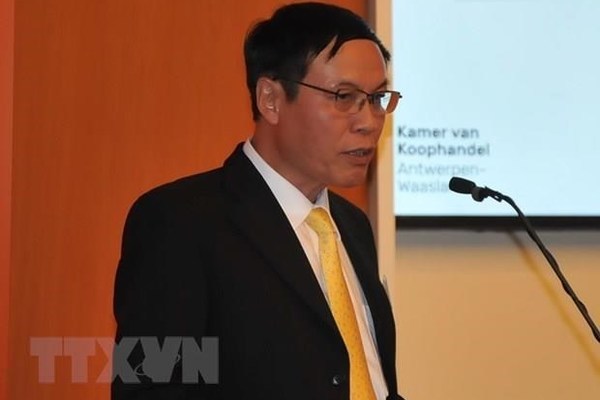 |
|
Vietnamese Ambassador to Belgium and Luxembourg Vu Anh Quang addresses the event
|
A ceremony to celebrate the 74th National Day took place at the Vietnamese Embassy in Brussels, Belgium, on September 10, drawing 300 officials from the EU and Belgium, representatives of local businesses, and the Vietnamese community in the country.
Addressing the event, Vietnamese Ambassador to Belgium, Luxembourg and head of the Vietnamese Delegation to the EU Vu Anh Quang said Vietnam attaches great importance to developing ties with the EU and Belgium in particular.
Promoting partnership with the EU and its member countries is one of the major pillars of Vietnam’s foreign policy, he said.
The Vietnam-EU relationship has thrived with the conclusion of negotiations on the EU-Vietnam Free Trade Agreement (EVFTA) and the EU-Vietnam Investment Protection Agreement (IPA) in June this year.
Meanwhile, Vietnam-Belgium ties have also expanded, especially in trade and investment.
The ambassador welcomed the contributions of the EU to peace, security and development in Southeast Asia, especially EU statements released in August regarding developments in the East Sea.
For his part, Jan Zahradil, President of the EU-Vietnam Friendship Parliamentarian Group and Vice Chairman of the European Parliament Committee of International Trade, said the signing of the EVFTA more than two months ago in Hanoi was a key milestone for both sides, and helped make Vietnam’s National Day ceremony happier.
Zahradil said as Vice Chairman of the European Parliament Committee of International Trade, he has followed the negotiations of the EVFTA and found this is the most ambitious deal the EU has signed with a developing country.
The EU-Vietnam Friendship Parliamentarian Group hopes to continue playing an active role during the European side’s approval of the deal, he said.
Commenting on Vietnam-Belgium relations after the signing of the EVFTA, Prof. Pierre Grega, Chairman of the Vietnam-Belgium Friendship Parliamentarian Group, said ties have been promoted in recent years and will thrive in the future, especially in trade, investment and training.
He said the ratification of the EVFTA will help expand trade and investment activities between the two countries. Vietnamese intellectuals trained in Belgium are expected to become a major force in the field, he added.
Kien Giang strengthens cooperation with Cambodian province
 |
|
Leaders of Kien Giang province and Kep province of Cambodia at the conference
|
Vietnam’s southern province of Kien Giang and Cambodia’s Kep province have agreed to boost cooperation in 2019 and the following years, striving to implement well agreements and treaties signed by the two countries’ States, Governments, ministries and departments.
At a recent conference to review the bilateral cooperation, the two localities pledged to strengthen coordination to protect security and order at sea, while raising public awareness of abiding by regulations in border and marine areas.
The two sides discussed measures to address incidents based on the bilateral solidarity, friendship and mutual respect, as well as jointly work to keep security and order, prevent crimes on the sea border lines and subversive activities of hostile forces.
They will also collaborate in the search and repatriation of remains of Vietnamese fallen soldiers and experts in the wartime in Cambodia.
The two provinces agreed to step up all-around cooperation in trade, economy, tourism, culture, sports, health care and people-to-people exchanges.
Trade between Kien Giang and Cambodian bordering localities, including Kep, reached over 257 million USD in 2017-2018.
Kien Giang has stepped up tourism connection with Cambodia’s southwestern coastal provinces, while Kep province has opened tours for holidaymakers to visit the Mekong Delta province of Vietnam.
In 2017-2018, more than 7,600 Cambodian tourists visited Kien Giang via Ha Tien-Preak Chak and Giang Thanh-Ton Hon border gates. Meanwhile, 107,500 Vietnamese visited Cambodia via the two gates.
The health sector of Kien Giang provided medical check-ups and treatment for over 100 patients in Kep as well as offered free medicines and relief for 400 poor people in the Cambodian province.
Mekong sub-region countries share experience in agricultural extension
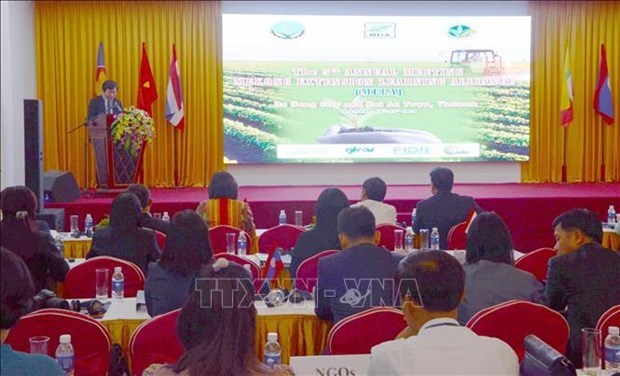 |
The fifth meeting of the Mekong Extension Learning Alliance (MELA) opened in Vietnam’s central city of Da Nang on September 11, within the framework of ASEAN cooperation in agricultural training and extension.
The four-day event, held by the National Agricultural Extension Centre under the Vietnamese Ministry of Agriculture and Rural Development (MARD), brings together 60 delegates from five MELA member countries namely Cambodia, Laos, Myanmar, Thailand and Vietnam.
The meeting is meant to exchange information, knowledge and experience in agricultural extension and advisory services in Mekong sub-region countries, along with research in agriculture and rural development.
The participants presented reports on policy implementation and the countries’ efforts in promoting smart agriculture adaptive to climate change, green agriculture, and the development of farmers’ organisations, including cooperatives.
Nguyen Do Anh Tuan, head of the MARD’s International Cooperation Department, said MELA makes it easier for farmers to access information-technology and investment capital to address challenges regarding climate change, natural disasters and environment, as well as to expand the market for farm products.
He highlighted the significance of coordination between regional agricultural extension organisations to food security and safety, animal and plant disease control and sustainable agro-forestry-fishery development.
The meeting is expected to reach specific solutions to enhance the partnership among regional agricultural extension organisations for improving capacity, stepping up technological transfer and agricultural reform in each nation, he said.
Initiated in Hanoi in March 2015, MELA has created a network for its member countries to share knowledge and best practice in agricultural advisory and marketing services, and sustainable rural development.
The previous four meetings of MELA were held in Laos, Myanmar, Cambodia and Thailand.